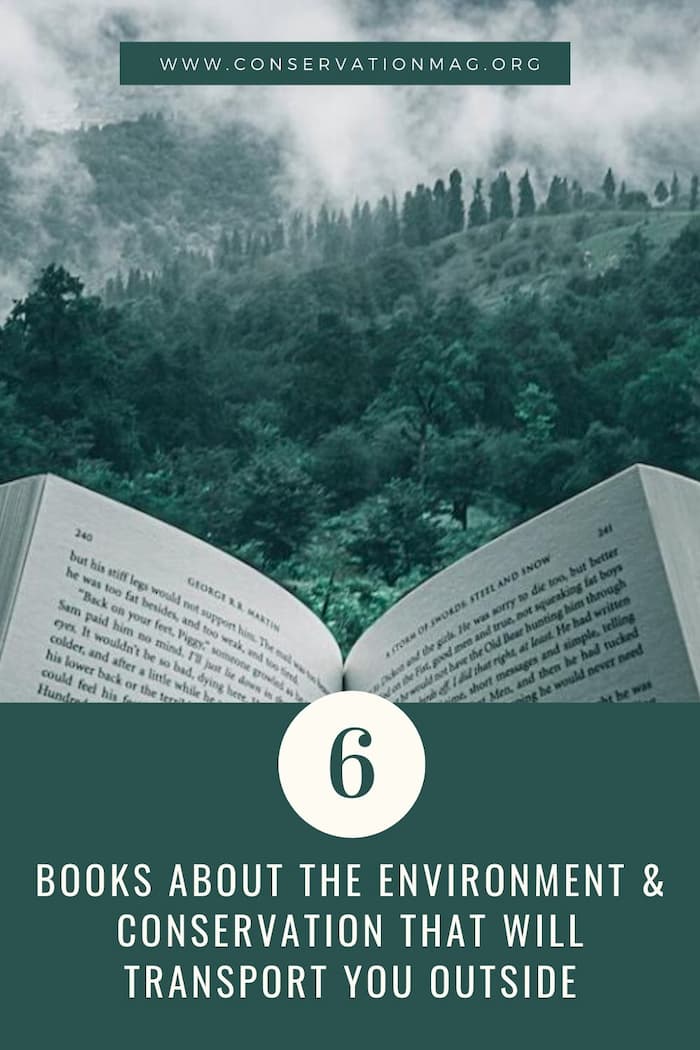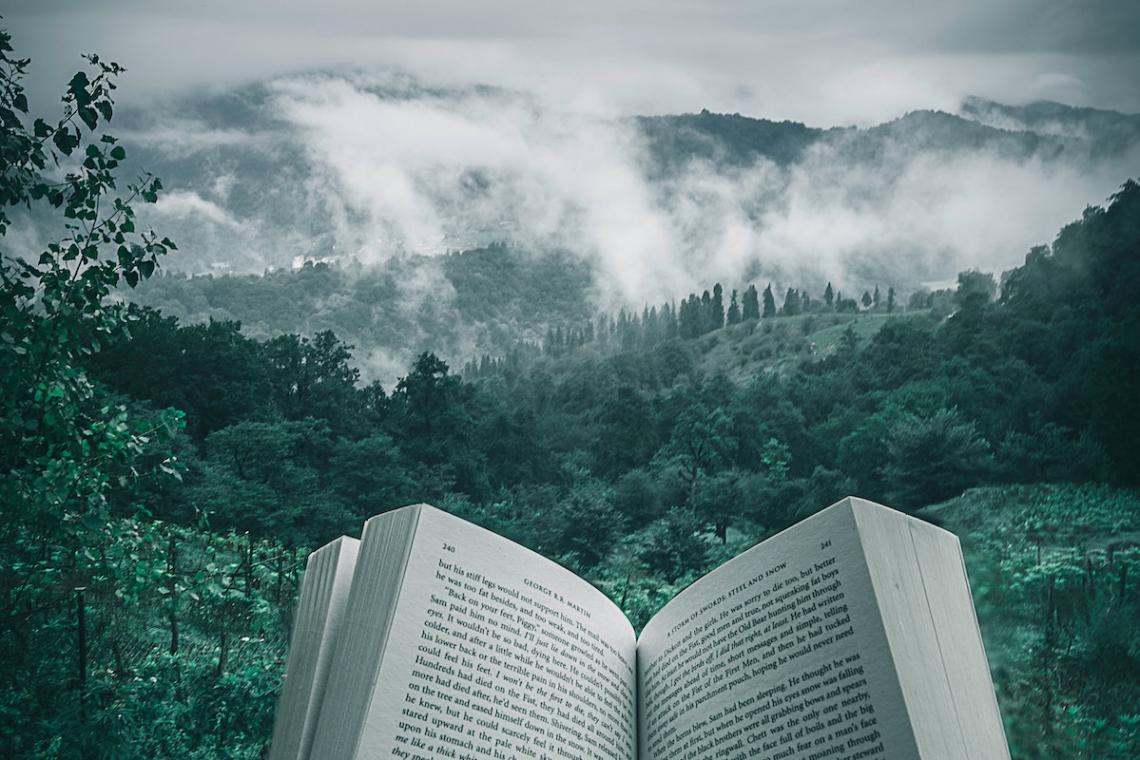Six books by a claustrophobic conservationist that may just help you escape lockdown without leaving your house.
For lovers of wildlife and wilderness, being stuck indoors for the foreseeable future can seem uninspiring. While studying at university, I lost the joy of reading for escapism and focused entirely on academic writing. I recently rediscovered the welcome distraction of reading novels and travel memoirs, which has certainly helped me stay grounded during this global pandemic. A way to travel when we cannot, and to see the nature beyond our back gardens, I have written this piece as a thank you to the authors keeping our wild minds occupied.
1. The Bone People by Keri Hulme
This 1985 booker prize winner and my most recent read will transport you to the wild beaches of New Zealand’s South Island. Though the book reads like a novel, strong elements of Hulme’s personal memoir run throughout. A struggling artist named Kerewin develops an unlikely friendship with Simon (or Haimona in Maori), a child who cannot speak but has a curious smile. Maori heritage and customs are entwined with vivid descriptions of the natural world and outbursts of trauma. Being slow-paced, and the flow sometimes broken by sections in Maori or poetry like paragraphs, the book takes a bit of focus to decipher. The lovable portrayal of Simon is what kept me reading. A scruffy, sandy-haired boy silently investigating the tide pools is enough to charm any beach-bum conservationist.
2. The Outrun: A Memoir by Amy Liptrot
I finished this book in a day. The Outrun is a captivating representation of the contrast between city and island life. As a young 20-something, Amy thrives in the bustle of London’s parties and never-stop attitude. Soon, the fun subsides, and as personal loss and uncertainty reach deep into Amy’s consciousness, alcohol begins to provide the space she needs to pause and rethink. After rehabilitation and with improved health, Amy decides to return to her childhood home, the Orkney Islands. She finds healing in the wind and wilderness. Amy takes on a job with the RSPB (Royal Society for the Protection of Birds), studying the endangered corncake. The contrasts of complete solitude and an island community, fixation with the internet and oneness with nature, are beautifully illuminated. I resonate with Liptrot’s description of the feeling of being drawn further and further north by some sort of wild force. This book was an inspiration and a joy to read.
3. The Serengeti Rules: The Quest to Discover How Life Works and Why It Matters by Sean B. Carroll.
This one I read a little while back, so although some of the details may be blurred, I remember the succinct writing style which makes complex ecological topics seem apparent as if they are simply the way nature intended. Having studied ecology modules at university, I always resented the way the natural world can be condensed into equations. Across all scales of biology, this book makes these fundamental ecological equations and chemical processes exciting, by drawing on inspiration from pioneering scientists behind the theories. If you are feeling lost in these uncertain times, Carroll will remind you of the seemingly unlikely yet perfectly balanced ways of the world, with every piece of nature having a part to play. Carroll dedicates this book to ‘the animals, and the people looking out for them’.
4. A log from the Sea of Cortez by John Steinbeck
I read this lesser-known Steinbeck classic while I was living in rural South West Ireland, working in conservation and spending my days on the beach. Perhaps my contentment at this time contributed to my great enjoyment of this book. Nevertheless, I would recommend this short read for anyone who loves the sea. Steinbeck recalls a marine specimen collecting voyage he embarked upon in 1940, with his eccentric marine biologist friend, Ed Ricketts. It is said that Ricketts was an inspiration for several characters in Steinbeck’s later fiction works. The voyage propagates an air of early 20th-century biology, with too much invasive sampling by modern standards. Organisms of all sorts are crammed into jars, dried, pickled and taken home for further investigation. Early work such as this provided a necessary foundation for modern, more ethical sampling. Despite being published well before the birth of conservation biology, Steinbeck voices concern for the destruction of habitats and the impact this has on connective webs between species.
5. Feral: Rewilding the Land, the Sea, and Human Life by George Monbiot
Perhaps one of the most influential books of recent years, Feral examines the tragic state of Britain’s wildlife. This was another day read for me. I was hooked from the outset where Monbiot describes sea kayaking for crabs in the stormy seas off the Welsh coast. Although this sits firmly in the popular science genre, Monbiot’s personal endeavours and anecdotal style give this book an air of storytelling. The two main issues covered in Feral are government subsidised sheep farming and deer management on private estates. In Britain, both practices benefit a wealthy few while sacrificing wildlife and the general population. By letting trees grow, reintroducing extinct native species and considering our choices as a consumer, we can begin fixing this mess. But this is not enough. Monbiot’s prominent voice in environmental media calls for systemic, governmental change. In this book, he encourages us all to live a ‘richer, rawer life’ and tackle our immense loss of nature connection.
6. The New Wild: Why Invasive Species Will Be Nature's Salvation by Fred Pearce
Living in the UK, I cannot deny that we have spectacular scenery in our ‘green and pleasant land’. However, this far from the wild. It is agricultural, highly managed and monotonous. Pearce writes in-depth about the internal battle many conservationists face. Should we continue managing ecosystems to support biodiversity across different habitats? Or should we let nature take its course and support rewilding? The New Wild takes case studies from across the globe and throughout history to present each side of this argument. Nature today faces enormous pressures, and we must adapt our way of thinking about ecology as fast as ecology is forced to adapt due to us. Pearce argues that invasive species could be nature’s salvation. This book encouraged me to explore alternatives that have been painted as the bad guys throughout my biological education.
Photo by Kourosh Qaffari on Unsplash
Shop for a cause
Shop on amazon.com | amazon.co.uk



